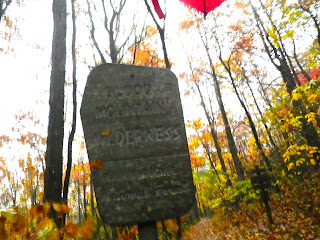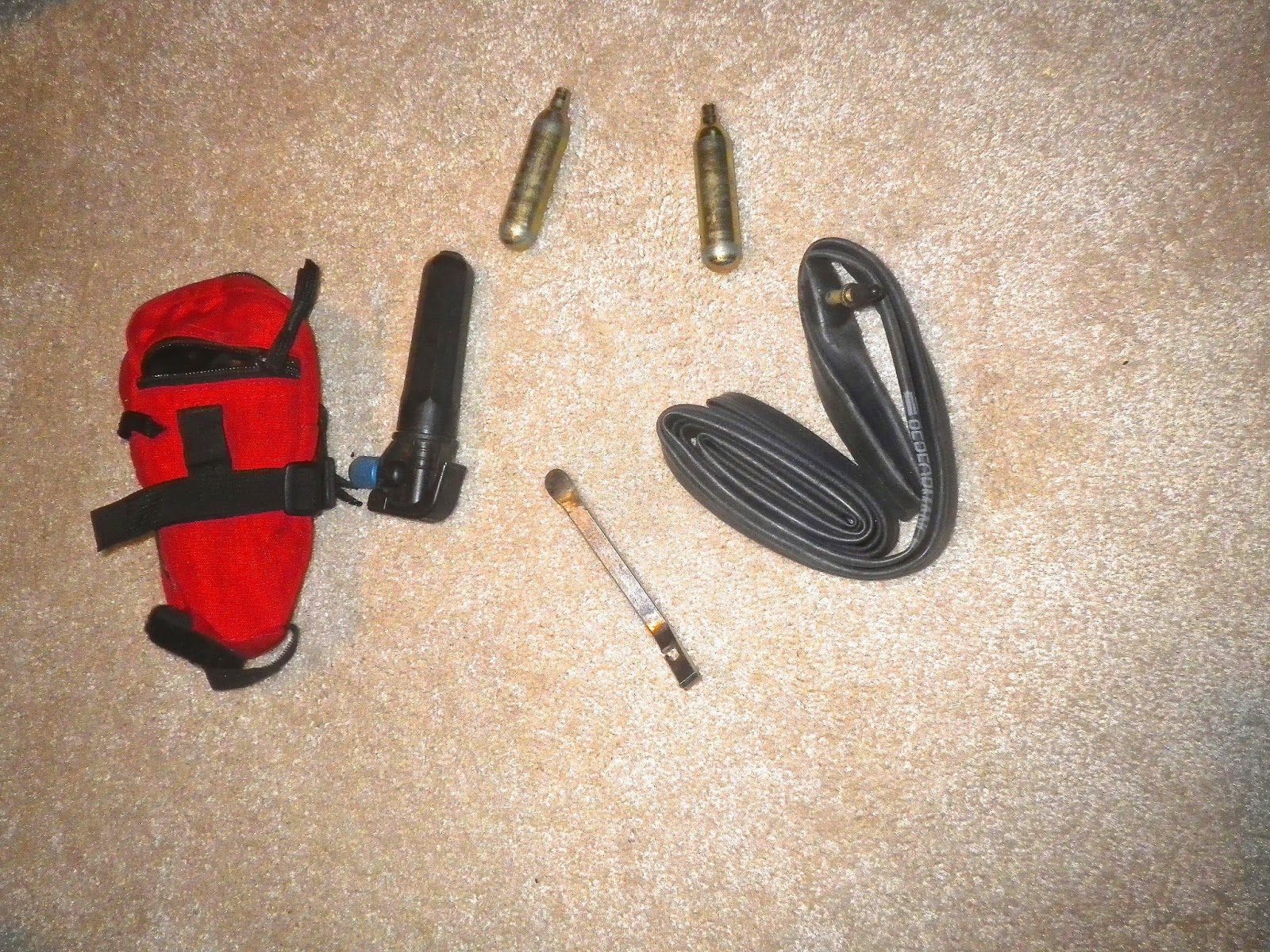I think often of individuals who are not physically able to hike but wish they could take one step on the Appalachian Trail and feel great about it. That's why I do not let any type of weather keep me from doing it. Rain, snow, sleet, hail do not stop me from putting one foot in front of the other. Thunder and lightening are the only factors that will make me stay home.
I usually hike in waterproof trail shoes, baseball hat, and rain coat. On rare occasion I will hike in gators, rain pants, and maybe an umbrella. As strange as it might seem, it is not hard to carry an umbrella and walk with a trekking pole at the same time. I may look funny, but I stay very dry.
Years ago my wife bought me a Golite umbrella, but I never had the nerve to hike with it for fear of being called a wimp. However, I have used it during snow storms and heavy rainfalls. It feels really good to keep the rain from stinging my face and the cold water from running down my neck and back.
While hiking up Blood Mountain I passed seven thru hikers who all liked the idea of the umbrella. All seven looked as if there was not a dry spot on their body. I stopped and chatted with all of them about what might be next after they finished the trail. The hikers had one night left on their quest to finish the 2,100+ miles of the Appalachian Trail (AT).
I am a section hiker and am not physically able to hike more than 100 miles at any one time. As part of a southern vacation my wife agreed to help me hike a 10.7 mile section of the Appalachian Trail from Woody Gap to Neel Gap. She dropped me off at the trail head and then picked me up that evening at the end of the trail. Many times she has been the shuttle guide for drop off and pick up. Most men my age are not interested in spending time hiking or backpacking any trail. The picture below was taken at the beginning of my hike in the Chattahoochee National Forest Neel Gap by way of Blood Mountain in pouring rain. Blood Mountain is the highest peak on the Appalachian Trail in Georgia at 4,458 feet. There are several theories for the name Blood Mountain. One theory is that it is the spot where the Cherokee and Creek Indian tribes had a big battle for territorial land rights and thousands of indians died. Another theory is that there was a mass murder of colonists in this area by indians, and the last theory is that it is named Blood Mountain because of the red colored lichen on the rocks.
The umbrella, gators, rain jacket and waterproof shoes kept me dry for most of the hike.
The trail is clearly marked with the white blaze. It is hard to get lost on the trail because if you miss a white blaze you can turn around, and you will more than likely see a blaze making the other hiking direction.
There are trail directional signs located in areas where other trails cross the AT. The trail sign indicated that my hike was 11.7 miles long.
After thousands of hikers have hiked the AT, the trail has become like an elongated bath tub. All the rain and snow that falls stays on the trail and all attempts to make the water run off the trail by using water bars is almost useless. The water was two to three inches deep for most of the hike. My waterproof shoes did a great job keeping my feet dry.
The trail was posted with bear warning signs due to all of the bear sightings at the camp areas. The most bear activity was in the spring and bear canisters were advised for campers/hikers.
A stream restoration project was being performed at the base of Blood Mountain on a small creek about two feet wide and caution was encouraged by hikers.
It was October and the maple leaves were in full color.
There are very few four-walled shelters on the AT and Blood Mountain has one of them. It was built in 1934 by the Civilian Conservation Corp. I looked inside and it was dry but very damp with concrete floors.
The privy was an above ground structure called a composting toilet. There was no privacy for all viewers could see you sitting from the waist up.
At the top there were shear rock slabs covered with wet leaves. That made it very dangerous to walk. Two of the last three miles of the hike were on extremely slippery rock slabs and steps.
The trail leading down the north slope was shaped like a elongated rock bath tub. The pounding rain and driving winds made it very difficult to walk down the steep slope.
Toward the bottom of the hike the trail was composed largely of steps made out of layered rock. The down step was about twice the drop of a normal stair step in a house. The impact to the knees was very stressful. With every step I could hear mentally my couch potato friends say, "That is why we do not hike."
At the bottom of Blood Mountain at Neel Gap is a large backpacking store and hostel called the Mountain Center, the only place on the AT where you actually pass through a man-made rock structure. You can restock any of your needs as well as have a bed, towel, and hot shower all for seventeen dollars.
Isaiah 40:4 - Every valley shall be exalted, and every mountain and hill be made low: and the crooked shall be made straight, and the rough places plain:





























